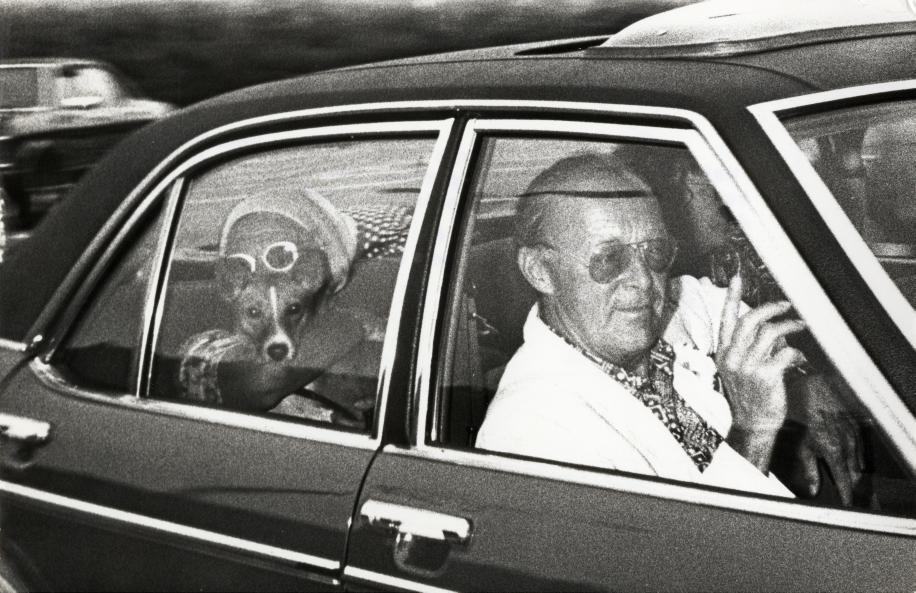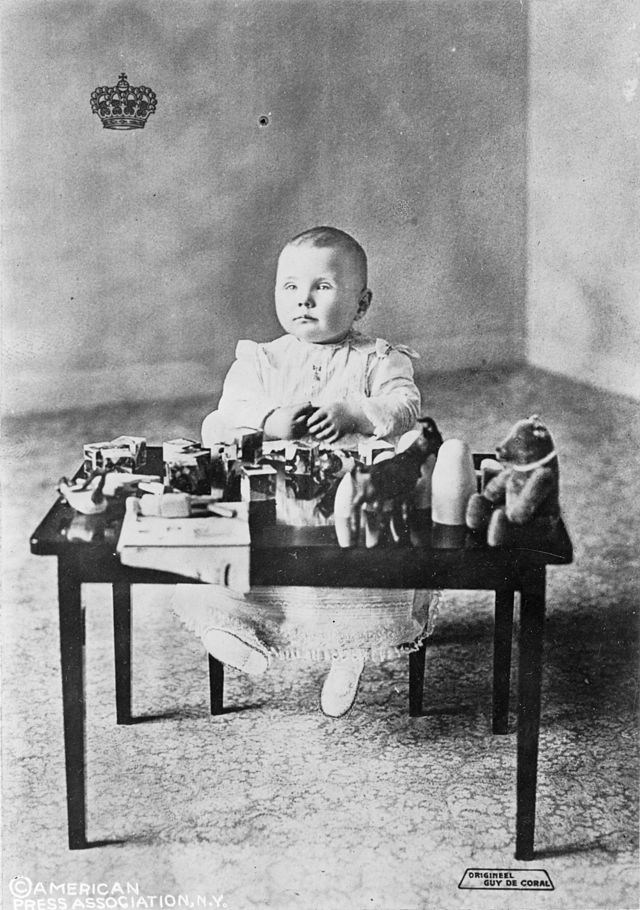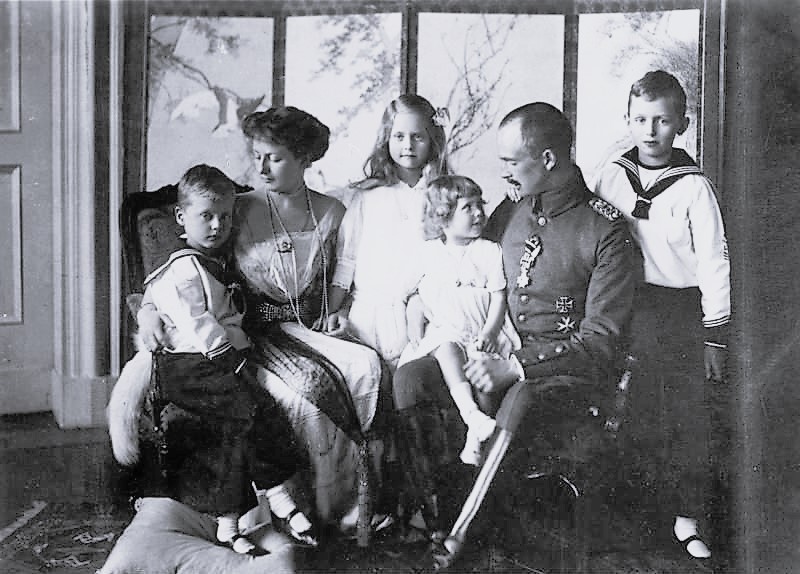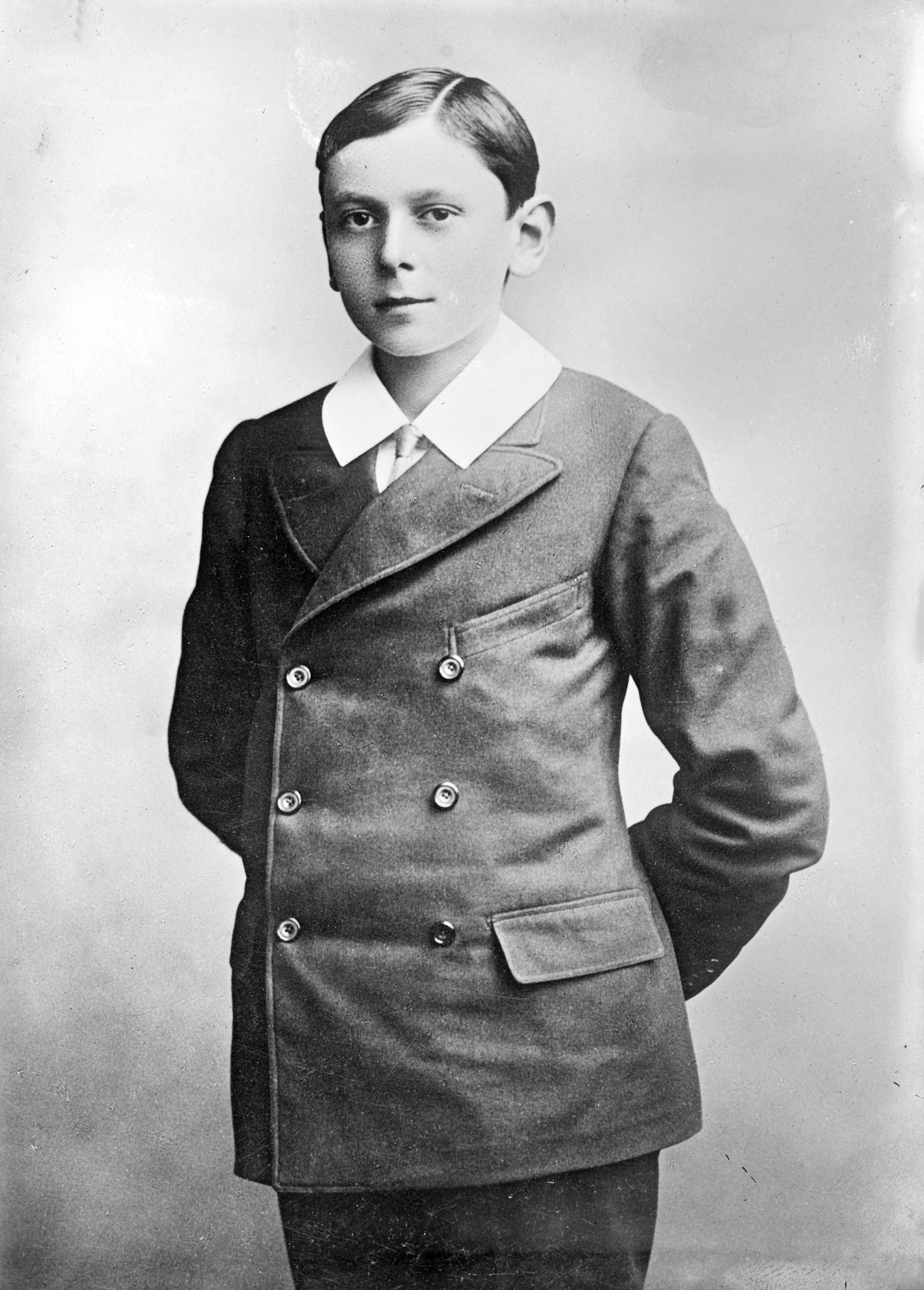by Susan Flantzer © Unofficial Royalty 2015

Photo Credit – Wikipedia
Prince Bernhard was the husband of Queen Juliana of the Netherlands. Bernhard Friedrich Eberhard Leopold Julius Kurt Carl Gottfried Peter, Graf von Biesterfeld was born on June 29, 1911, in Jena in the Duchy of Saxe-Weimar-Eisenach now in the German state of Thuringia. He was the elder son of Prince Bernhard of Lippe (younger brother of Leopold IV, Prince of Lippe) and his wife Armgard von Cramm. Bernhard and Armgard’s marriage was considered morganatic, so the younger Bernhard was styled Graf von Biesterfeld (Count of Biesterfeld) at birth. In 1916, Bernhard’s uncle, the reigning Prince of Lippe, created Armgard Princess of Lippe-Biesterfeld with the style Serene Highness and this title and style also was extended to her two sons.
Bernhard had one younger brother:
- Prince Aschwin of Lippe-Biesterfeld (1914 – 1988), married Simone Arnoux, no children
Bernhard started his education with tutors at home and at the age of 12 began to attend a boarding school for boys in Züllichau in the Prussian province of Brandenburg, now Sulechów, Poland. In 1929, he completed his secondary education and then studied law at the University of Lausanne, Switzerland and at the Friedrich-Wilhelm University in Berlin, Germany, now Humboldt University. Bernhard then obtained a job at the Parisian subsidiary of the German chemical company IG Farben, where he continued to work until his engagement to Juliana.
In February of 1936, Bernhard attended the Winter Olympics in Garmisch-Partenkirchen in Bavaria, Germany. There he met and fell in love with Princess Juliana of the Netherlands, the only child, and heir of Queen Wilhelmina of the Netherlands. After Queen Wilhelmina had lawyers draft a very detailed prenuptial agreement that specified exactly what Bernhard could and could not do, the couple’s engagement was announced on September 8, 1936. After a civil marriage at The Hague City Hall, a religious marriage was held at the Grote of Sint-Jacobskerk in The Hague on January 7, 1937. Before the wedding, Bernhard had been granted Dutch citizenship and changed the spelling of his names from German to Dutch, and on his wedding day, he became His Royal Highness Prince Bernhard of the Netherlands.
Juliana and Bernhard had four daughters:
- Queen Beatrix of the Netherlands (born1938), married 1966 Claus von Amsberg, had three sons
- Princess Irene of the Netherlands (born 1939), married 1964 Carlos Hugo, Duke of Parma, divorced 1981, had two sons and two daughters
- Princess Margriet of the Netherlands (born 1943), married 1967 Pieter van Vollenhoven, had four sons
- Princess Christina of the Netherlands (1947 – 2019) married 1975 Jorge Pérez y Guillermo, divorced 1996, had two sons and one daughter
Prince Bernhard also had two illegitimate daughters:
- Alicia von Bielefeld (born 1952), whose mother has not been identified, Alicia is a landscape architect who lives in the United States
- Alexia Grinda (born 1967), whose mother was French socialite and fashion model Hélène Grinda
During World War II, three days after Germany began its invasion of the Netherlands in May 1940, the Dutch Royal Family left for London, England. One month later, Juliana, along with her daughters Beatrix and Irene, went to Ottawa, Canada, where they would be safer. Prince Bernhard stayed with Queen Wilhelmina in London during the war, although both did make occasional visits to the rest of the family in Canada. Juliana and Bernhard’s third daughter Margriet was born while the family was in Canada. On August 2, 1945, the whole family returned to the Netherlands.
On September 4, 1948, after a reign of nearly 58 years, Queen Wilhelmina abdicated in favor of her daughter and Juliana became Queen of the Netherlands and Bernhard became Prince Consort. From 1954 to 1976, Bernhard served as chairman of the Bilderberg Conference, an international political group that seeks a better understanding between the cultures of the United States and Europe to encourage cooperation on political, economic, and defense issues. Prince Bernhard helped found the World Wildlife Fund and was its first president, serving from 1962 – 1976.
Bernhard was forced to step down from leadership roles in both groups after being involved in the Lockheed bribery scandal. The scandal was comprised of a series of bribes and contributions in the process of negotiating the sale of aircraft made by officials of Lockheed, an American aerospace company, in the 1950s to the 1970s. It caused considerable political controversy in West Germany, Italy, the Netherlands, and Japan. Prince Bernhard received a $1.1 million bribe from Lockheed to ensure the Lockheed F-104 would win a contract over the French-made Mirage 5. The results of a Dutch government inquiry almost led to a constitutional crisis because Queen Juliana threatened to abdicate if Bernhard was prosecuted. Bernhard was not prosecuted but had to step down from several public positions and was forbidden to wear his military uniforms again. Although Bernhard always denied the charges, interviews published after his death revealed that he had admitted to taking the money.

Queen Juliana and Prince Bernhard returning from Italy due to developments in the Lockheed scandal on August 26, 1976; Photo Credit – Wikipedia
On January 31, 1980, Queen Juliana announced that she would abdicate in favor of her eldest daughter Beatrix on April 30, 1980, her 71st birthday. After 1995, when Juliana’s general health began to decline, she made fewer public appearances. In 2001, during a television interview on the occasion of his 90th birthday, Prince Bernhard said that Juliana no longer recognized her family and had been suffering from Alzheimer’s disease for several years. On March 20, 2004, Juliana died in her sleep at the age of 94 due to pneumonia.
Embed from Getty Images
Prince Bernhard with his daughter Queen Beatrix at Queen Juliana’s funeral
On November 17, 2004, eight months after Juliana’s death, it was announced that Prince Bernhard had lung cancer. An additional announcement was made two weeks later stating that he also had a malignant tumor in the intestines. Bernhard died at the University of Utrecht Medical Center on December 1, 2004, at the age of 93.

Funeral procession in Delft; Photo Credit – Wikipedia
A state funeral was held on December 11, 2004, in the Nieuwe Kerk in Delft. The funeral had a military nature and the coffin was brought to the church on a gun carriage as a Royal Air Force flyover in the missing man formation flew overhead. After the funeral, Prince Bernhard was interred in the royal crypt at the Nieuwe Kerk in Delft.

The access to the royal crypt in the foreground; Credit – By Sander van der Wel from Netherlands – Royal grave tomb and the grave of Willem van Oranje, CC BY-SA 2.0, https://commons.wikimedia.org/w/index.php?curid=28146859
This article is the intellectual property of Unofficial Royalty and is NOT TO BE COPIED, EDITED, OR POSTED IN ANY FORM ON ANOTHER WEBSITE under any circumstances. It is permissible to use a link that directs to Unofficial Royalty.
Kingdom of the Netherlands Resources at Unofficial Royalty
























